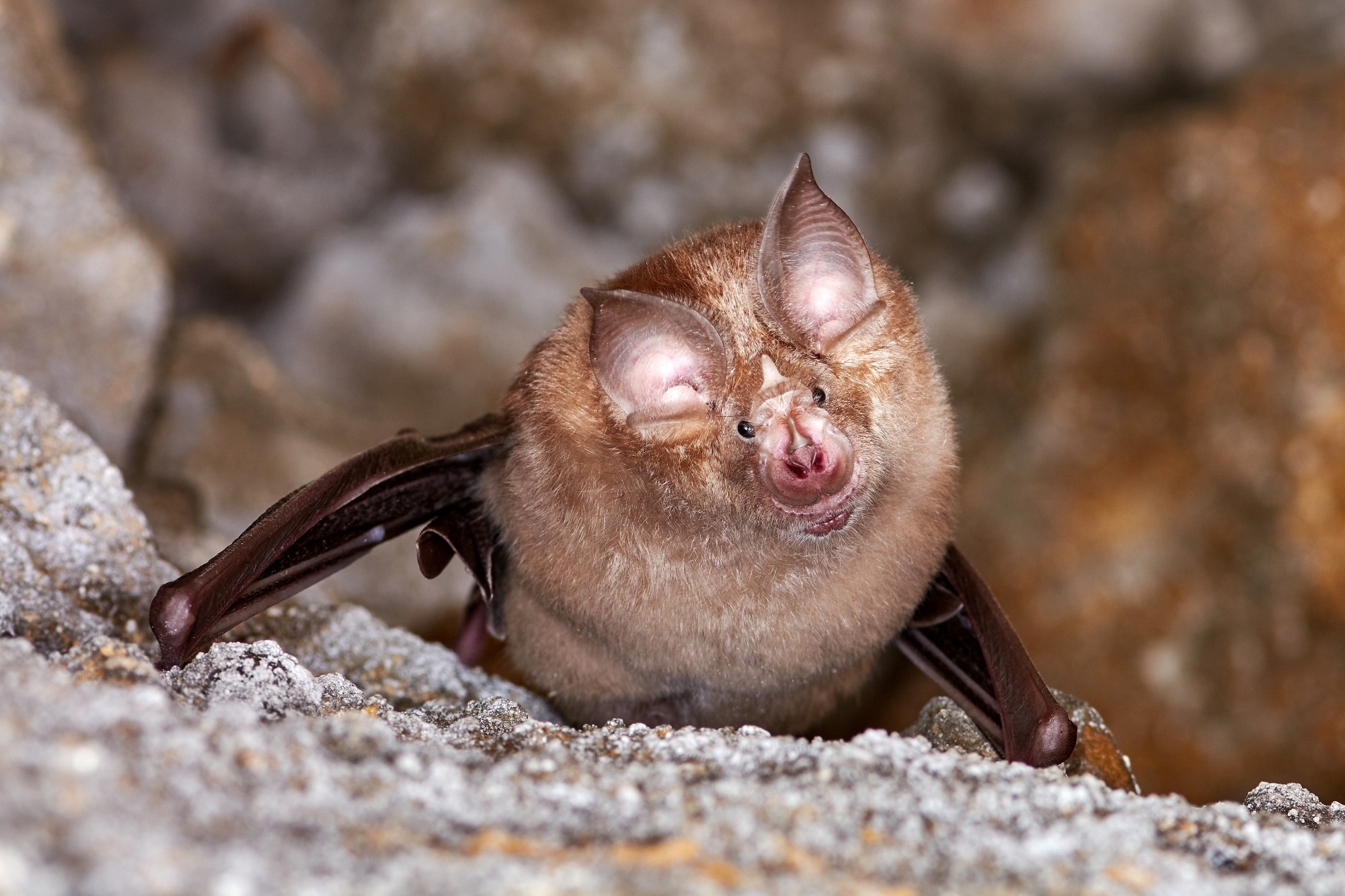A recent study published in Nature Communications screened for coronaviruses (CoVs) in 16 native species of bats in the United Kingdom (UK).
 Study: Genomic screening of 16 UK native bat species through conservationist networks uncovers coronaviruses with zoonotic potential. Image Credit: aaltair/Shutterstock.com
Study: Genomic screening of 16 UK native bat species through conservationist networks uncovers coronaviruses with zoonotic potential. Image Credit: aaltair/Shutterstock.com
Background
Seven CoVs are known to cause infections in humans. Severe acute respiratory syndrome (SARS)-CoV-2 is the causative agent of the coronavirus disease 2019 (COVID-19) pandemic. Although the direct ancestor of SARS-CoV-2 remains to be identified, its close relatives have been reported in horseshoe bats. Surveillance of animal CoVs should be one of the top public health priorities, given the current burden of CoVs and their potential risks as future epidemic/pandemic agents.
So far, only two studies screened bats for CoVs in the UK. One of these screened seven bats and detected alpha CoVs in Natterer’s and Daubenton’s bats; the other screened horseshoe bats and recovered the whole genome of a sarbecovirus. Nevertheless, these studies did not assess the zoonotic risks of CoVs. Thus, the zoonotic potential and diversity of bat viruses in the UK remain largely unexplored.
The study and findings
In the present study, researchers screened fecal samples from bats in the UK for CoVs. Deep ribonucleic acid (RNA) sequencing was performed on fecal samples from 16 bat species over two years. The researchers recovered nine complete genomes and five partial contigs of CoVs from six bat species.
Maximum-likelihood phylogenetic analyses determined that the nine genomes comprised four alpha CoVs from the Pedacovirus sub-genus, and one and four beta CoVs from the Merbecovirus and Sarbecovirus sub-genera, respectively. Two (out of nine) coronavirus genomes (pedacovirus PpiGB01 and merbecovirus PaGB01) represented new species, each containing a new gene.
Sarbecovirus genomes were detected in two distinct species of horseshoe bats - Rhinolophus hipposideros and R. ferrumequinum. Next, lentivirus-based pseudoviruses were generated using spike proteins from RfGB02 and RhGB07 sarbecoviruses, PpiGB01, and PaGB01. The pseudoviruses were evaluated for their ability to infect cells with human angiotensin-converting enzyme 2 (hACE2), aminopeptidase N, or dipeptidyl peptidase-4.
Only RhGB07 spike pseudoviruses demonstrated entry into cells expressing hACE2 receptors. Additionally, the team confirmed the binding of the RhGB07 spike to hACE2 using biolayer interferometry (BLI). However, RhGB07 spike-hACE2 binding was around 17-fold lower than SARS-CoV-2 spike-hACE2 binding.
Further, they tested whether pseudoviruses could infect human cells (HEK293T cells) with physiological or lower levels of hACE2 expression. None of the spike pseudoviruses demonstrated entry into human cells. Next, the authors investigated whether RfGB02 and RhGB07 spike pseudoviruses could enter human cells expressing ACE2 orthologs from four bat species – R. pusillus, R. ferrumequinum, Rousettus leschenaultia, and Myotis lucifugus.
They noted significant cell entry only with M. lucifugus ACE2. RfGB02 and RhGB07 failed to utilize ACE2 from R. ferrumequinum, even though the former was sampled from this bat species. Surprisingly, BLI indicated binding of the RhGB07 spike to ACE2 receptors from M. lucifugus and R. ferrumequinum.
The researchers used an artificial intelligence model to predict the three-dimensional structure of the RhGB07 spike’s receptor-binding domain (RBD), which was compared with resolved structures of RBDs from SARS-CoV-2, RaTG13, and BANAL-236 bound to hACE2. High structural conservation was observed for all sarbecoviruses.
However, conservation at key RBD residues in contact with hACE2 was poor, explaining the lower hACE2 usage efficiency. The sarbecoviruses contained an R-A-K-Q motif at the S1/S2 cleavage site. This was one nucleotide away from a potential furin cleavage site (R-X-K/R-R motif) that enables cleavage by furin-like proteases, amplifying the ability of CoVs to infect human cells.
However, the RhGB07 spike was not cleaved by host proteases when the FCS was introduced by mutating the R-A-K-Q sequence. Moreover, a high prevalence of recombination was observed in sarbecoviruses, which might accelerate their adaptation to infecting novel hosts.
Conclusions
In sum, the researchers analyzed temporally and geographically diverse samples from 16 out of 17 UK bats species. The study provided evidence of in vitro binding between one of the sarbecoviruses isolated from the horseshoe bats and hACE2. Despite moderate conservation, RhGB07 could bind to and utilize hACE2 (for entry).
Further, the team uncovered an R-A-K-Q sequence in sarbecoviruses, likely a precursor to an FCS. However, mutating R-A-K-Q to the FCS sequence did not enable spike cleavage by host proteases.
Overall, the findings indicated that sarbecoviruses would require additional molecular adaptations to infect humans, warranting continued surveillance of their zoonotic potential.